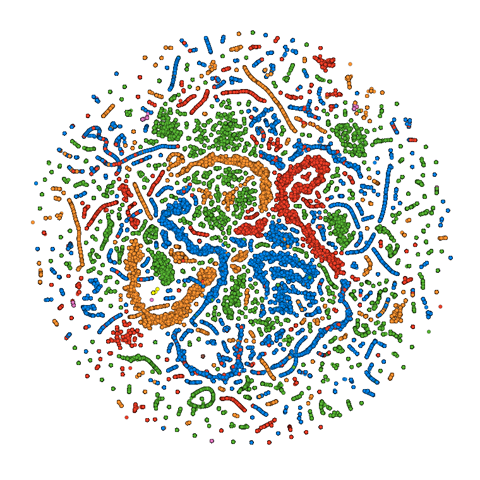Neural Nets Help Design Stable Quantum Computers
September 21, 2018
Using cutting-edge technology, scientists are pushing the envelope of quantum computing.

From this bewildering tangle of data points, researchers are extracting information about the best way to design a quantum computer.
Image Credit: Fösel, Tighineanu, & Weiss.
What's Going On Here?
Quantum computing promises to revolutionize the way we handle heavy calculations by taking advantage of the weird physics that crops up at extremely small scales, like the phenomenon of quantum entanglement. But harnessing that weirdness isn't easy—at such a small scale, it's easy for things to get knocked askew by the random motion of particles around them.
Where computers use bits of information—either a 1 or a 0—quantum computers use qubits, which can be in an in-between state. Certain arrangements of qubits are more robust against noise than others, so scientists are using regular, non-quantum computers to help them find the most effective strategies to correct the errors that emerge in a quantum computer.
To do this, they're using machine learning, a technique that assigns the computer a goal—in this case, minimizing the total amount of error in a series of qubits—and letting it try thousands of different arrangements. At first, they're almost random, but as the computer tests arrangements and finds which ones are closer to its goal, it hones in on those and gets closer to an optimal system.
Each point on the graph above represents a possible arrangement of qubits tested by the computer. This isn't a physical depiction, though—the data is too complicated to be properly represented in two dimensions. Even so, the clusters of points and their relationships to one another can help researchers figure out the most robust design for a quantum computer.














